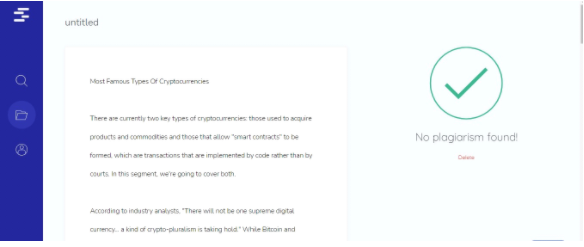There are currently two key types of cryptocurrencies: those used to acquire products and commodities and those that allow “smart contracts” to be formed, which are transactions that are implemented by code rather than by courts. In this segment, we’re going to cover both. According to industry analysts, “There will not be one supreme digital currency, a kind of crypto-pluralism is taking hold.” While Bitcoin and Ethereum represent the bulk of the market share of cryptocurrencies, we have also seen several other innovations that arise and develop rapidly. Fully, there are over 1,000 cryptocurrencies (called ‘altcoins’) in existence; more than 600 have market capitalizations of over $100,000. Also, know about the risks of investing in bitcoin at official site.
Bitcoin:
Bitcoin is renowned of all cryptocurrencies, published in 2009 by somebody under the pseudonym Satoshi Nakamoto. Payment via Bitcoin is easy, considering the sophisticated technologies behind it. In a trade, mobile wallets are used by the buyer and seller to submit and take funds. The number of merchants who embrace Bitcoin proceeds to grow, featuring merchants as varied as the sandwich chain, Microsoft, Expedia, and Subway.
Although Bitcoin is generally accepted as being revolutionary, it is not without restrictions. It can, for instance, only handle 7 transactions a second. By comparison, thousands of transactions per second are processed by Visa. Not only is Bitcoin slower than any of its rivals, but it is also often constrained in its features. This is mirrored in its share of the sector, which dropped from 81% in June 2016 to 40% almost two years later. While the price of Bitcoin has usually pursued an upward path, the price of Bitcoin plunged dramatically in early 2018, slipping below $8,000 when reports of tighter legislation from China and South Korea appeared. The price of Bitcoin also plummeted after news of the SEC crackdown on crypto exchanges and after the suspected hacking of Binance. Litecoin, Zcash, and Dash, which claim to have greater privacy, include other currencies such as Bitcoin.
Ether and Ethereum:
These blockchain-based currencies have become increasingly common. Its market cap was about $28 billion in August 2017. “Financial experts have expected at one point that the market capitalization of Ether would overtake that of Bitcoin. Since then, though, difficulties with Ethereum technologies have triggered decreases in valuation. Its share of uncertainty has been shown by Ethereum. Like Bitcoin, the price of ethereum also dropped from close to $1,400 to less than $1,000 within several days in mid-January 2018.
Ethereum is a network that makes it reasonably simple to build intelligent contracts, mostly used interchangeably, while Ether is a coin used to join into payments on the Ethereum blockchain. Put clearly; intelligent contracts are computer systems that can enforce the provisions of a contract instantly. They function in the same manner as the “IF (then)” Excel function: the smart contract performs the accompanying contractual provision when a pre-programmed condition is activated.
Let’s use this to illustrate. Let’s assume that you are a business that manufactures and sells video game consoles. You are collaborating with manufacturers and distribution firms to guarantee that: 1) the consoles are made well and on schedule, 2) there are no labour abuses, and 3) both stakeholders are compensated on time. Numerous contracts will be associated with conventional activities to create a single console, with each group keeping its copies of the document.
Smart contracts, though, together with the blockchain, have automatic transparency. In a few cases, intelligent contracts can be leveraged: The delivery firm checks the boxes as a truck picks up the assembled consoles from the warehouse. These are also applied to the blockchain, which allows the funds to be released from the account of the video game corporation. There is no invoice, or payments are chased away. In addition to fees, a manufacturing worker must check his or her ID card, which is then checked by third-party sources to ensure that they are not in violation of labour policies.
Other Cryptocurrencies:
Litecoin:
Introduced in 2011, Litecoin is close to Bitcoin in that it is both open-sourced, decentralized, and cryptographically assisted. It was meant, however, to play a complementary function to Bitcoin, “the silver to the gold of Bitcoin.” Litecoin has a faster rate generation block and faster validation of transactions.
Dash:
Launched in 2014 as “Darkcoin” because of its open master code network, Dash has subsequently re-branded and provides further privacy for its users. It utilizes something called a network called “Masternode” that has a better base than Bitcoin.



